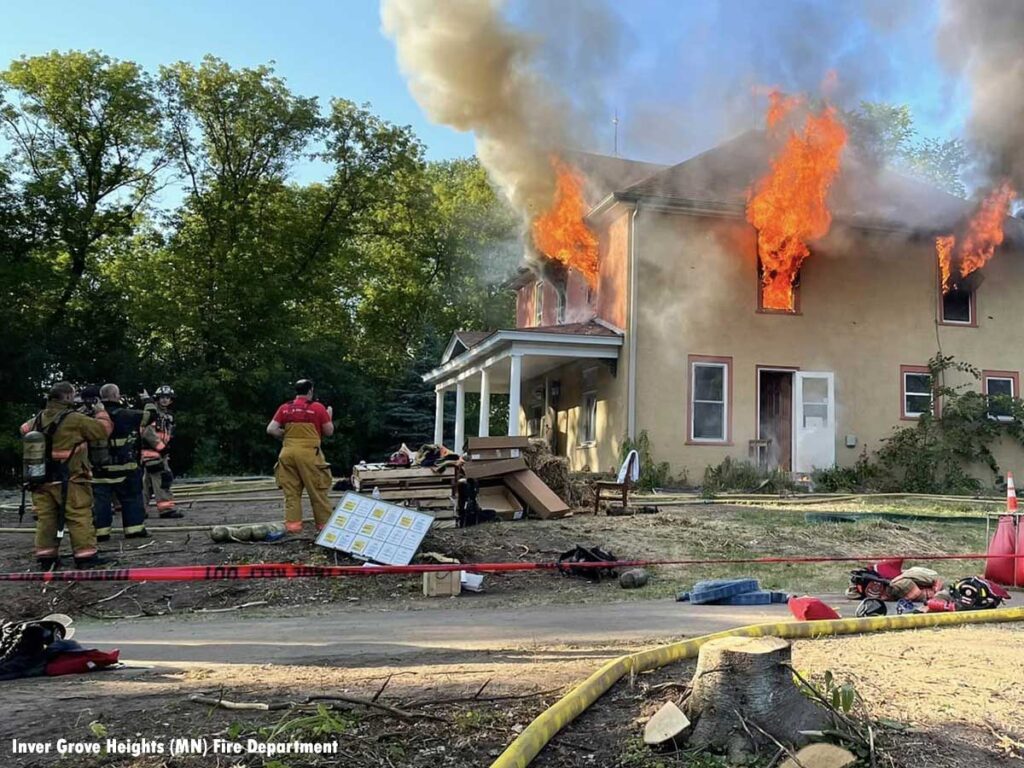
By Judy Thill
Writing for the NVFC
What is your fire department’s culture of safety when it comes to firefighter training? Training is the foundation of safety—and health—for any organization, but some in the fire service appear to have forgotten that. Are you focusing on the latest and greatest techniques or the basics? Actually, both are correct. It is always good to learn new, safer, and more efficient ways of doing things, but the basics are what sets the safety and culture of your department.
Many departments are reading this thinking, “We already take care of the basics.” But are you?
Some departments do not appear to be putting the same value on training they used to in years past. For some, it is an issue of time availability, but for others, it goes back to the attitude of “this is the way we’ve always done it,” which can be dangerous. Training—and specifically training on the basics—needs to move beyond going through the motions and teaching the same drill topics year after year.
The theme of this year’s Safety Stand Down, taking place June 16-22, is “Fire Training: Back to Basics.” Some of the basics involve “how” you conduct your training, but this year’s Safety Stand Down goes well beyond that to focus on building a foundational training program that meets the needs of the department and community with safety and health at the forefront.
The week is divided into five daily themes.
Day 1: Building the Foundation of a Training Program – Starting off the week, the focus is on the fundamentals of a training program: setting your goals, taking the time to prepare, and making sure you have mentors for your newer members. This preparation is important to ensure the training is relevant, complete, and actually teaches what needs to be learned.
Day 2: Assessing the Needs of the Community and Department – Before you get to your regular training programs, are you developing an annual training plan and is that plan coordinated with your community’s risks and department’s operational procedures or guidelines? Are you documenting the training you do? That is important for not only your firefighters, but also for your entire community. Training documentation is needed for recertifications, accident investigations, liability claims, and insurance ratings for your residents and businesses.
Day 3: Safety During Training – While safety needs to be the focus of anything done in the fire department, safety during training is paramount. In general, make sure everyone knows that safety needs to be THE priority. Practice builds consistency. Do you just go through the motions, or actually train like you would respond at the emergency scene? Is everyone maintaining situational awareness, and do they understand the responsibility for safety lies with everyone, not just the instructors? Do all participants understand that if they see something unsafe, they have the right and responsibility to say something right away to stop the training, preventing someone from getting hurt?
Day 4: Physical and Behavioral/Mental Health Considerations – Even though this is called the “Safety” Stand Down, the physical and mental health of our firefighters is just as important! Rehab during training and at scenes has shown to reduce health issues for firefighters. Decontamination after training as well as specific incidents will go a long way in preventing cancer. Mental and behavioral health training is important for both firefighters and officers, not just once, but ongoing.
Day 5: The 12 Foundations of Fire Department Training – To wrap up the week, download the 12 Foundations of Fire Department Training from the Safety Stand Down website and review these with your crews. Discuss why each one is important and what the department does to support these foundational practices. A poster size is available to hang in the department for a constant reminder of these Foundations.
Good training benefits everyone! It enables firefighters to understand and be confident in their job and know what to do to mitigate the emergency and keep themselves safe and healthy. The community benefits because the incidents are taken care of efficiently and effectively, potentially saving lives and property.
Visit the Safety Stand Down web site at www.safetystanddown.org to access the 12 Foundations, Safety Stand Down sweepstakes quiz, activity ideas, and resources to have a successful Safety Stand Down event. At the end of the day, we want everyone to get home safely!
Judy Thill is the chief of the Inver Grove Heights (MN) Fire Department and a Minnesota director for the National Volunteer Fire Council.

